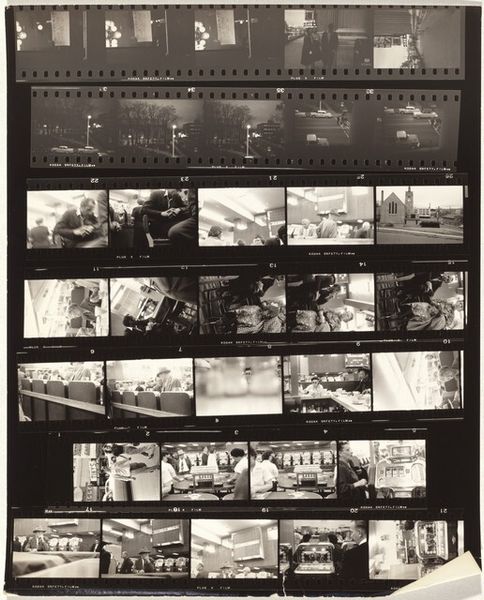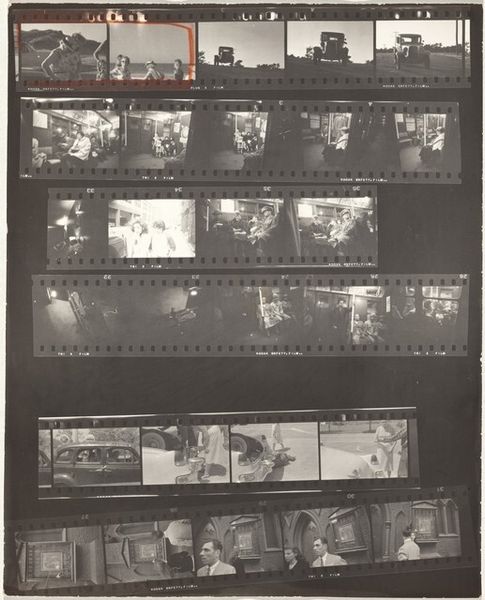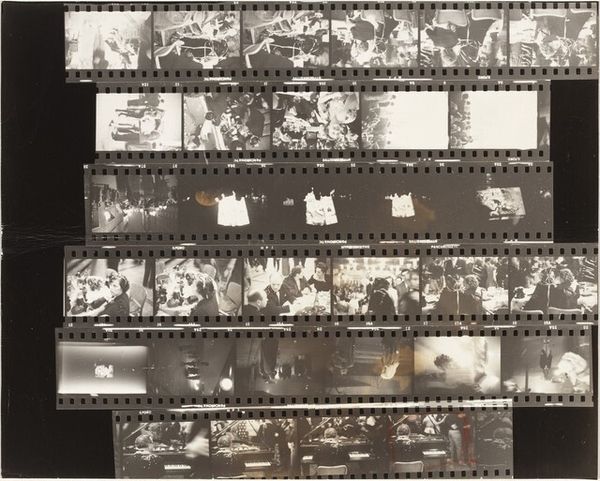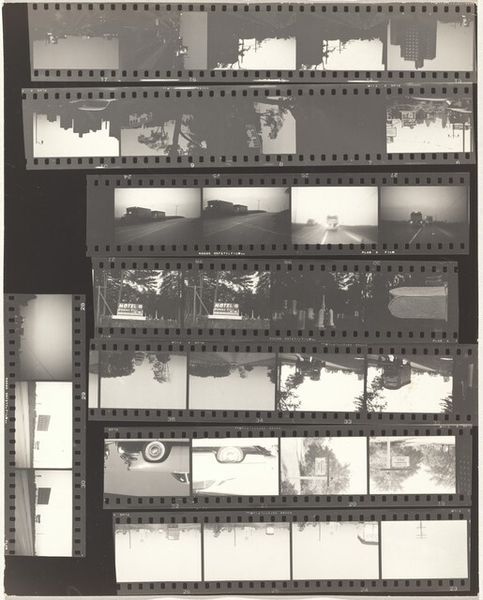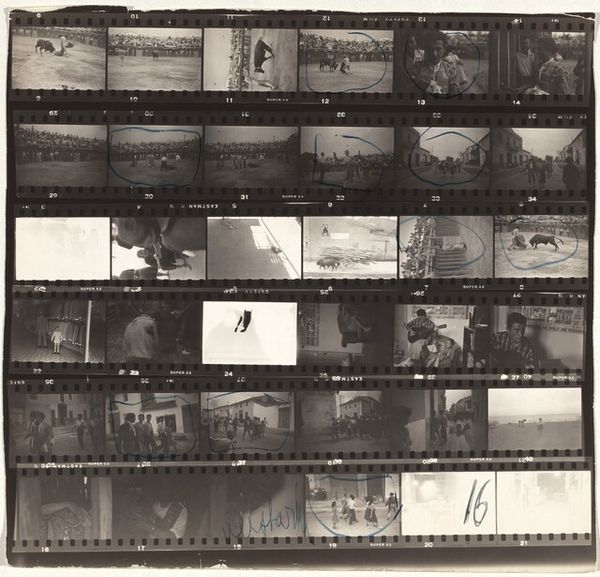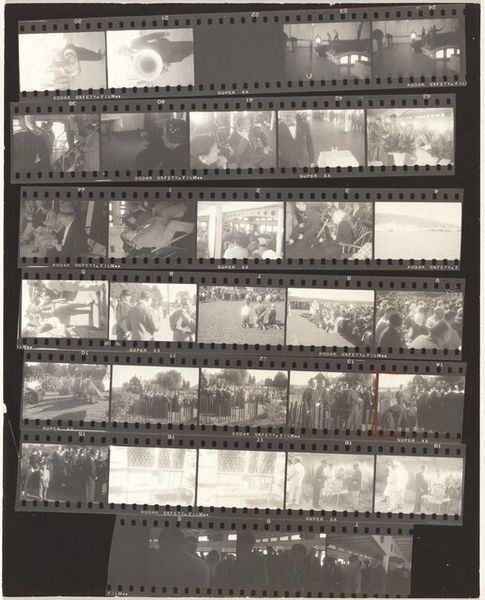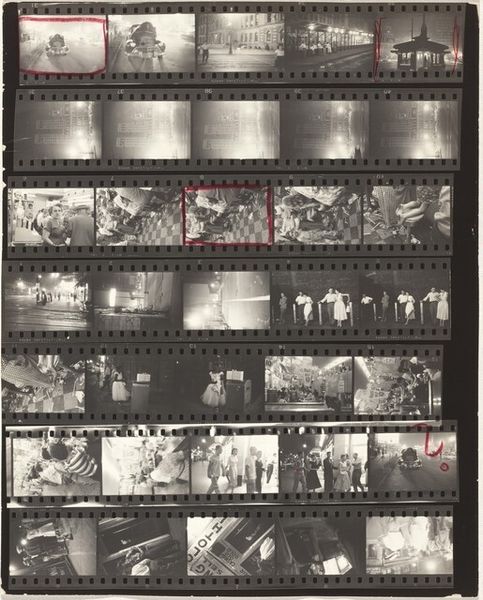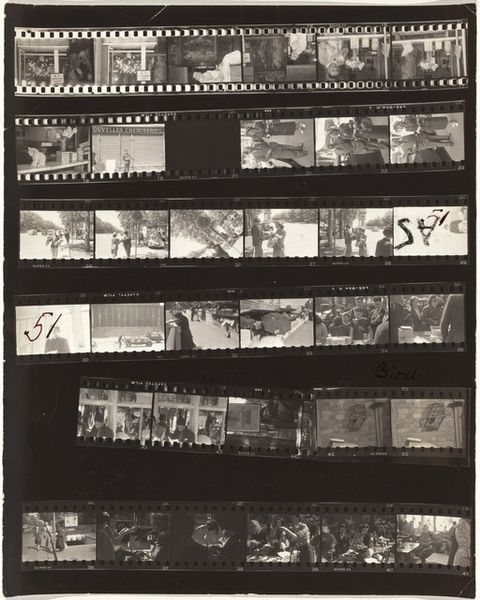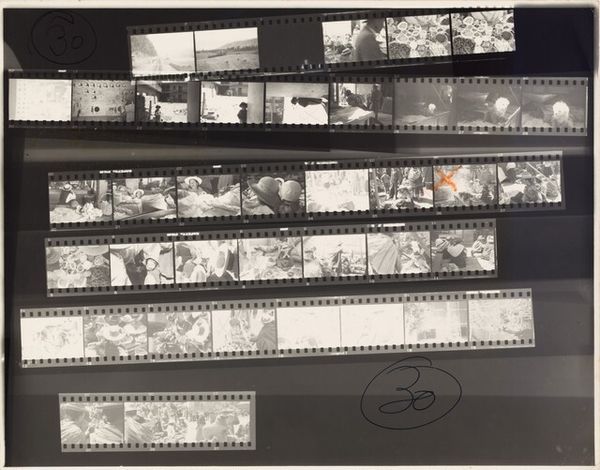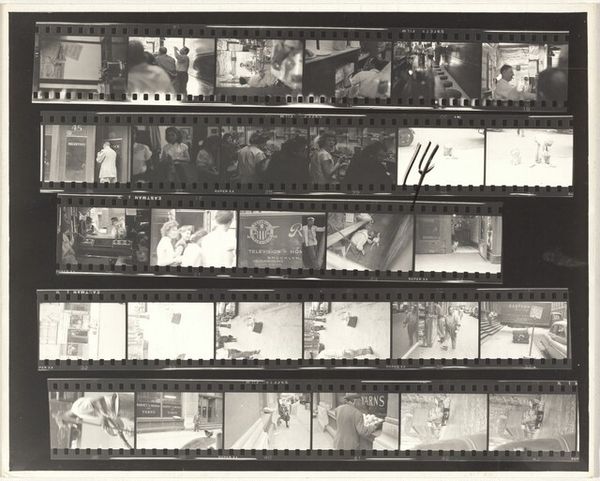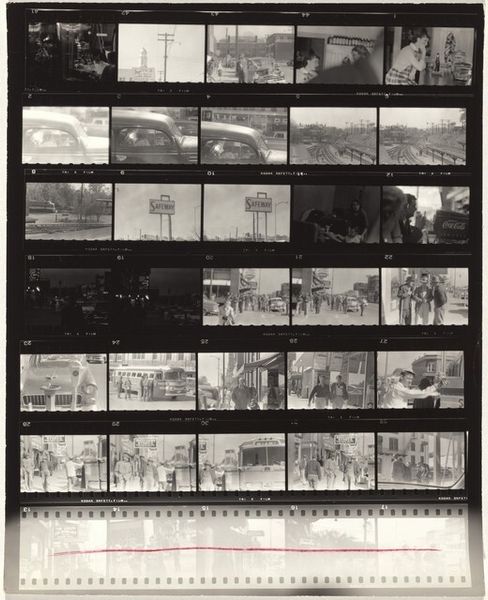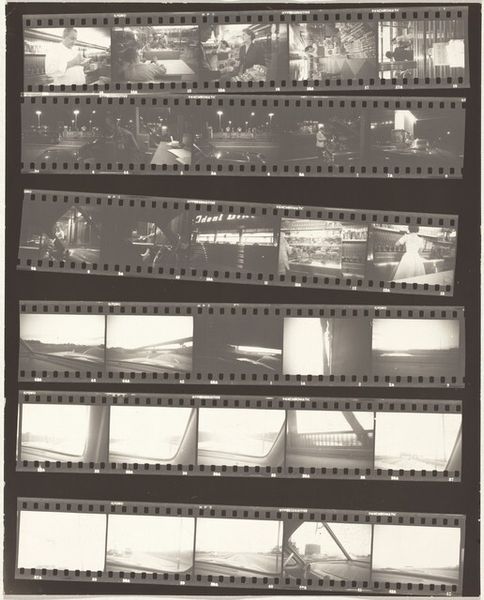
Dimensions: overall: 21.7 x 24.2 cm (8 9/16 x 9 1/2 in.)
Copyright: National Gallery of Art: CC0 1.0
Curator: Here we have Robert Frank's "Valencia, Spain 17," a gelatin-silver print made in 1952. The artwork presents a full contact sheet rather than an isolated print. What are your initial thoughts? Editor: I find the arrangement jarring at first, but utterly captivating. The repetition of images—especially those carriages—and the stark black borders force a rhythm, a sequence of looking that both reveals and conceals. There is a powerful contrast between individual narrative potential and overall abstraction. Curator: It certainly challenges the traditional presentation of photography. The inclusion of the entire contact sheet shifts our focus. Frank exposes the photographic process itself, not just the final product. The image then documents Frank’s engagement with urban space. The carriages visible on many of the strips give the viewer the time frame that this work inhabits. Editor: Precisely. One sees, too, how the hand of the artist remains visible: that boldly scrawled "17," the painterly application of red marking on the sheet, the sprocket holes down each side… These elements all rupture the photographic illusion, reminding us of the choices and material constraints at play. They add a new layer of narrative as the work shifts toward the metalinguistic, highlighting not only the "what," but the "how" of seeing. Curator: That's well-put. And to dig a little deeper, how does this fit into post-war Europe? Are there deeper connotations that this selection of work implies? Does the overall narrative expose deeper truths of Valencian culture, especially post Franco rise to power? The contact sheet creates both transparency but also can reveal power dynamics within the urban core through what it depicts. Editor: What lingers with me is Frank's willingness to show the seams, to expose the inherent messiness and contingency of image-making. The narrative is fractured and incomplete, as if the artist's viewpoint resists easy answers, favoring a dialogue instead. It reminds one that photography is as much about seeing as it is about selecting, cropping, and editing out. It gives the piece power but is not explicit in delivery. Curator: Very insightful. It seems that what starts out as a fairly traditional representation of a space can deliver more than is initially expected. Editor: Indeed, an image of openness in Valencia opens us up as well.
Comments
No comments
Be the first to comment and join the conversation on the ultimate creative platform.
